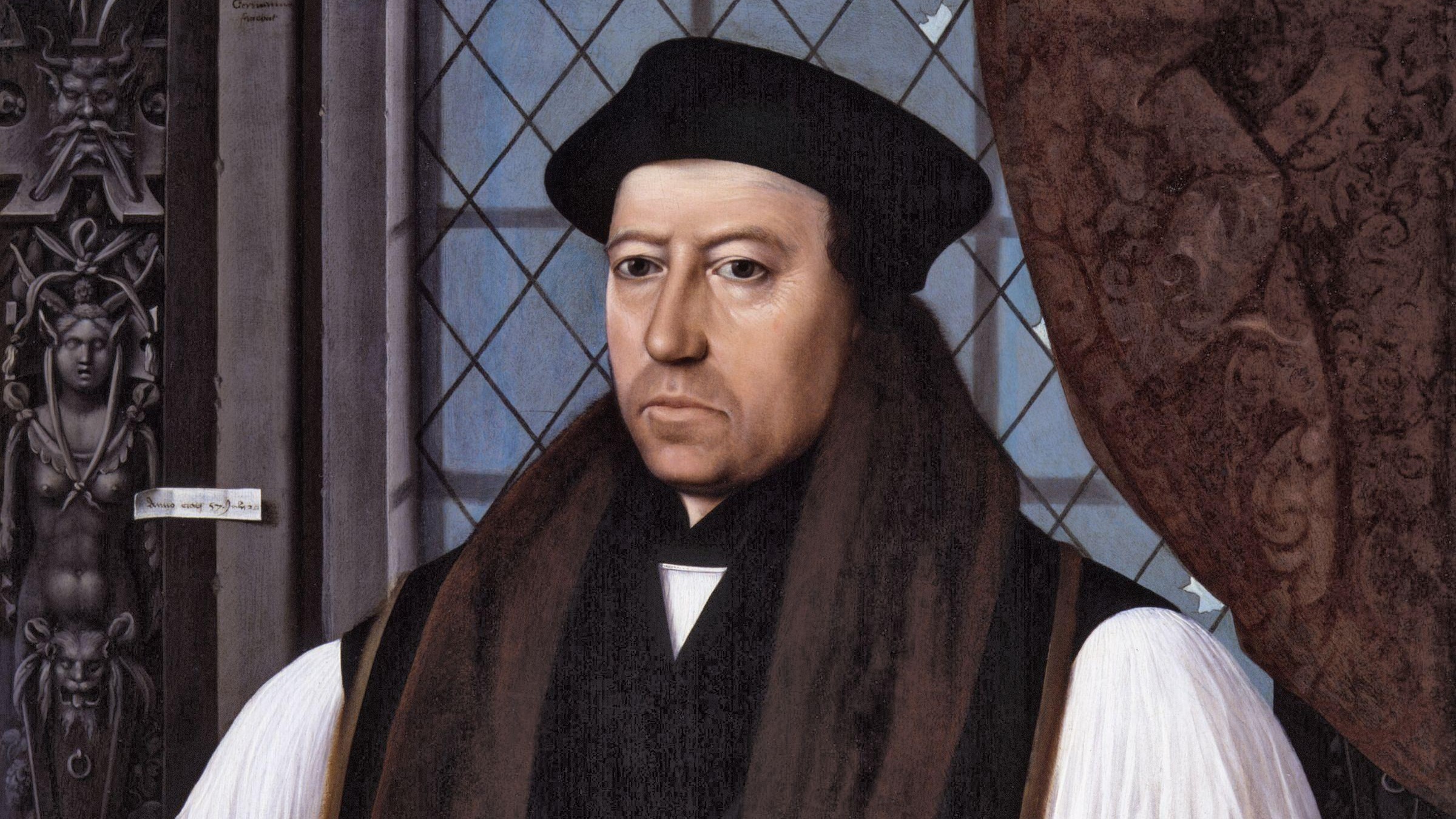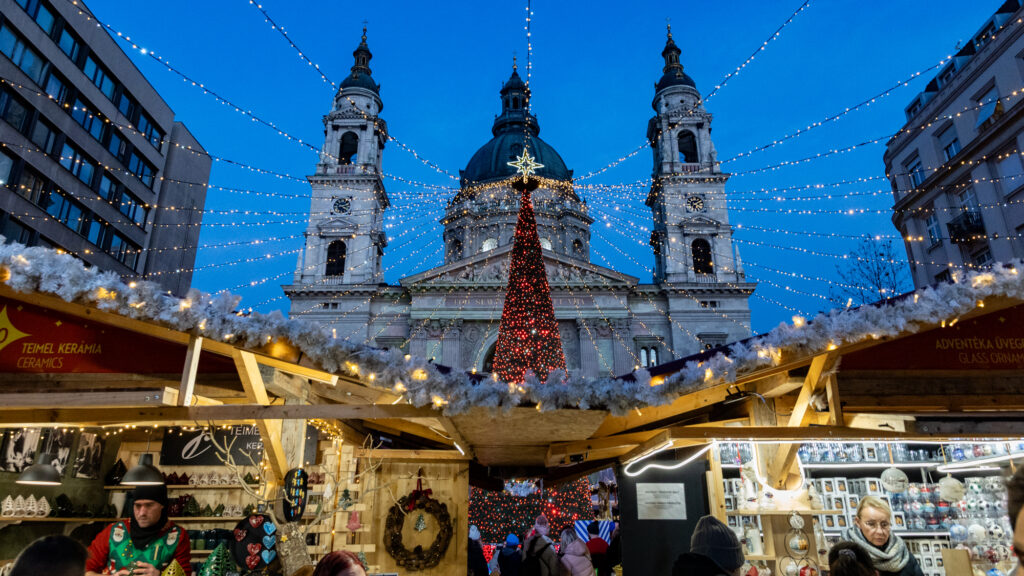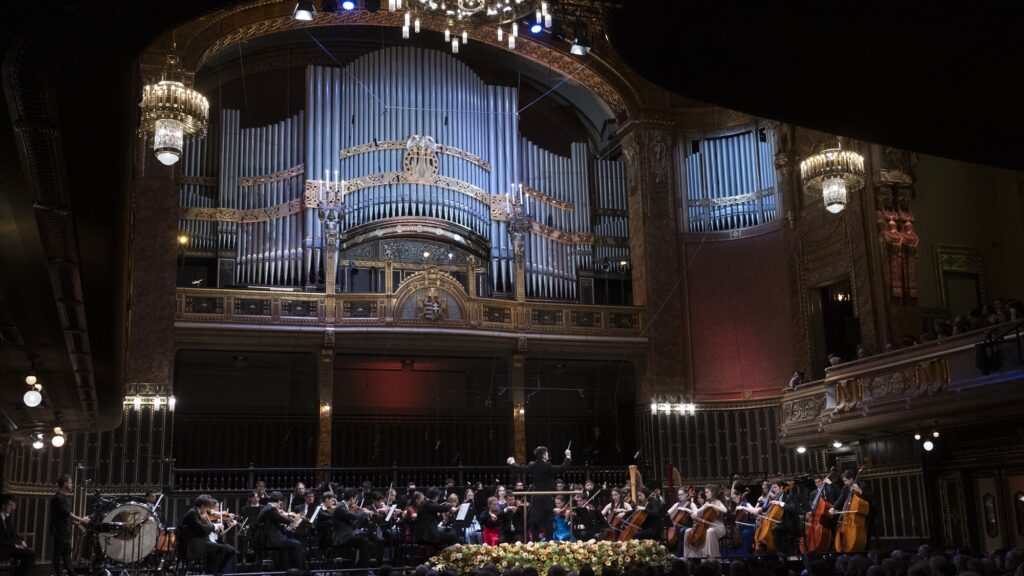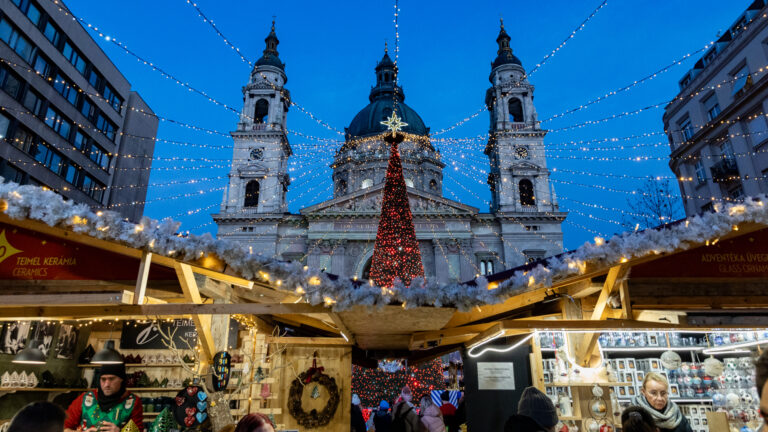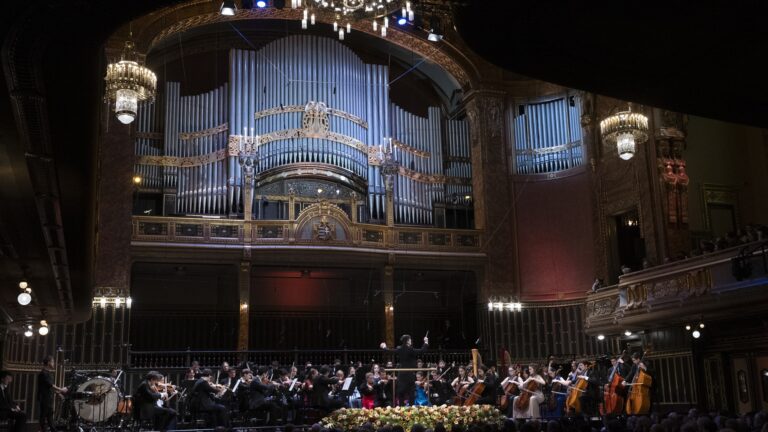Adapted from a lecture delivered at the Danube Institute on 9 October 2023 under the title ‘Five Eyes, Four Realms and Central Europe’
In September 1938, British Prime Minister Neville Chamberlain famously—or rather, infamously—said that Nazi Germany’s designs on Czechoslovakia were ‘a quarrel in a far away country between people of whom we know nothing’.[1] This statement would seem to suggest that the Anglosphere’s connection to Central Europe has only ever been minimal at best. In this essay, I hope to persuade the reader that in fact the connection has been long and substantial, in some respects going back literally centuries. Certainly today the connection between the English-speaking countries and Central Europe is very strong, if at times and in certain areas tense and even controversial.
In addressing the relationship between Central Europe and the English-speaking world, past, present and future, I write as both a North American and as a Polish citizen—in fact, as the son of anti-Communist Polish political exiles. If the twentieth century was a time of catastrophe for Europe, then I am also a child of catastrophe.
Defining Central Europe and the Anglosphere
I should begin by explaining how I define both areas of the world. There are many definitions of Central Europe, and so I should state up front that I am speaking primarily about East–Central Europe, a region which has quite a lot of shared history and culture. I mean the Visegrád Four countries, plus some other neighbouring areas of Europe. Would I include, for example, the Baltic states, in this definition? Yes, partly. My definition includes the area of the old Kingdom of Hungary—the Lands of the Holy Crown of St Stephen—as well as much of the territory of the old Polish–Lithuanian Commonwealth, which at one time included most of the present-day Baltic countries. If you look at a map of Poland between the two world wars, you will immediately see it looks quite different from the map of the Poland of today, as a result of the territorial changes forcibly imposed on the country by Stalin. My late mother was born in the northeasternmost part of interwar Poland, near the Latvian border, an area now situated in present-day Belarus. This very spot is arguably the northern border of Central Europe, on the same latitude as Denmark, where pastel-coloured baroque churches were (and to some degree still are) as common as they are a thousand kilometres to the south.[2]
But one might say Central Europe definitely ends when the alphabet switches from the Roman to the Cyrillic. Other cultural observers might say you know you are in Central Europe when you see houses chalked with letters C+M+B for the Feast of the Epiphany on 6 January each year.
As for the Anglosphere, here I mean primarily the countries of the Five Eyes intelligence sharing alliance, which arguably is at the heart and centre of the West’s security architecture. In 1946 America and Britain signed a highly secret instrument called the UKUSA agreement, and although things about it had leaked out over the years, it was not officially made public until 2010. By 2021 Five Eyes was sufficiently out of the shadows to be able to celebrate publicly the 75th anniversary of the original agreement.[3] Early on, Canada, Australia and New Zealand joined this alliance as well. Together today the five countries constitute what is undoubtedly the world’s dominant economic, technological, military and cultural zone. One can argue about university rankings and brainpower hubs, but a case can be made that all of the world’s top ten universities today are based in the Five Eyes countries, and that the vast majority of the world’s top fifty universities are also based there too.[4] I probably don’t need to tell you that this is the geographic area that gave birth to Silicon Valley and the City of London, McKinsey and Goldman Sachs, Harvard, MIT and Oxbridge, Blackrock and Blackstone, Facebook, Amazon, Apple and Google. I’m not suggesting that all of the things and trends the English-speaking world exports to Europe and to the rest of the world are good ones. And if the USA is the senior partner in this Anglosphere alliance, the other four, increasingly referred to as the ‘CANZUK’ realms, form a distinct community of nations with myriad links past and still very much present. Newly printed Canadian passports ask that the bearer be allowed to pass freely in the name of His Majesty King Charles III, and my own current Canadian passport says I can seek out a British or Australian government office in case of need.
In the military sphere the Anglosphere continues to break new ground, as with the AUKUS trilateral security pact established in 2021 between Australia, the UK and the United States, focussing not only on nuclear submarine development but on cyber, AI, quantum and hypersonic technologies.[5] There is talk that the other two Five Eyes countries, Canada and New Zealand, may also in due course join AUKUS in some capacity.
First Links Between the Two Regions: The Middle Ages
With these regional definitions out of the way, when can we say that substantial links between the Anglosphere and Central Europe first developed? I think the right answer is the Middle Ages, and the reason was trade. The Polish–Lithuanian dual monarchy, which then included most of the territory of present-day Ukraine, was Europe’s largest producer and exporter of grain.[6] This grain made its way to Poland’s Baltic ports for export to feed Western Europe, including England, and English and Scots traders and merchants started to come in substantial numbers to Central Europe. The Polish realm was also a major exporter of timber and flax, which became increasingly relevant to England when that country became a global maritime power. Britannia’s aspiration to rule the waves required Central European timber to build its ships and Central European flax to make its rigging, not to mention hemp, tar and pitch. The large-scale Baltic trade between Central Europe and England continued for centuries, typically with Dutch middlemen, centred on grain and forest products, and Central Europe in turn received such import commodities as cloth, sugar, tobacco and coffee.[7]
The Reformation and the 18th Century
Contact between England and Central Europe intensified during the Protestant Reformation, as English Protestants travelled extensively in Central Europe, and Central European Protestants visited England. One particularly notable figure of this interchange was Thomas Cranmer, who was to become King Henry VIII’s Archbishop of Canterbury in the new Church of England and complier of the Book of Common Prayer. In 1532, Cranmer, still a Catholic priest, travelled to Central Europe as the King’s envoy, and returned discreetly to England with his new German Lutheran wife.[8]
You might say, that’s all very well and good—but what about Hungary? Well, a momentous late 18th century conflict in the British Isles would bring a large wave of gentlemanly émigrés to this part of Central Europe. Britain’s last Catholic king, James II, was driven into exile as the Jacobite Stuart cause was lost. Large numbers of Irish gentlemen and army officers also went into exile, an episode generally known as the Flight of the Wild Geese, finding new careers in the armies of France, Spain and other Continental countries. Many entered the service of the Habsburgs after 1691, and over one hundred Irishmen attained the rank of general or field marshal in Habsburg service.[9]
Less than a century later, the Anglosphere had expanded well beyond Britain, and another momentous historical event took place—the American War of Independence, which attracted various aristocratic European, including Central European, officers to fight for the American cause, romantically inspired by the cause of freedom, rather than democracy, I might add. The Polish–Lithuanian Commonwealth actually based its new constitution of 3 May 1791 largely on the new United States Constitution that came into force some two years earlier, adapting American ideas to a reforming Central European constitutional monarchy. 3 May is today an important national holiday in Poland, commemorating the adoption of the world’s second oldest modern written constitution and Europe’s first. Edmund Burke was one of many prominent admirers of the new Polish constitution, saying in 1791: ‘It probably is the most pure… public good which has ever been conferred on mankind.’[10] Unfortunately, this far-sighted document, intelligently designed to remedy Poland’s weaknesses and structural problems, came too late: the country was divided up by its neighbours and entirely wiped off the map of Europe in 1795.
The 1848 Revolutions, Emigration and Industrialization in Central Europe
A half-century later, the failed revolutionary upheavals in 1848 would see thousands of Central Europeans go into exile in Britain. One of the most famous of these was Hungarian national hero Lajos Kossuth, who travelled extensively in the United States before moving to London, to live there for most of the 1850s. In America, Kossuth was received at the White House twice by President Millard Fillmore, and was generally feted and celebrated everywhere he went. So great was American enthusiasm for him that he was hailed as the ‘George Washington of Hungary’, and many American parents of the time named their babies after him.
However, by the late 19th Century, Central Europeans in America were more likely to be relatively poor immigrants seeking a better life in the New World. Millions of Central Europeans emigrated to North America during the several decade period of mass immigration. Canadian government policy sought to attract large numbers of Ukrainians to settle and farm the Canadian prairie and make it a big success, which they have very much done. Ukrainian churches and communities are common and visible across Western Canada, making the region a kind of second Ukraine in the New World.[11]
And an industrializing Central Europe would find itself linked to America’s King Cotton. Central Europe’s most notable industrial boomtown was the city of Łódź in the Russian partition of Poland, which was only a tiny village a century earlier. Dubbed the ‘Polish Manchester’, Łódź boomed thanks to a combination of American cotton, German capital and unfettered access to the entire consumer market of the Russian Empire, which readily bought all of its textile products.[12] Stupendous fortunes were made overnight, and the city’s leading industrialists built palatial residences for themselves equal to, if not more extravagant than, those built by rich entrepreneurs anywhere in the world during that period. You will today also see magnificent tombs in the Protestant, Jewish and Catholic cemeteries of Łódź, reminiscent perhaps of those in the famous Recoleta cemetery in Buenos Aires, built during Argentina’s own age of rapid wealth creation.
WWI and Its Aftermath
Despite these growing links between America and Central Europe, the United States remained officially aloof from the affairs of Europe until the coming of the First World War. In George Washington’s famous farewell address of 1796, he said: ‘The great rule of conduct for us in regard to foreign nations is, in extending our commercial relations to have with them as little political connection as possible.’[13] One can understand this sentiment—the new country had disentangled itself from Britain, the old world was an ocean away, and so America could concentrate on its own internal development. If some would call this posture isolationism, by the early twentieth century the United States would also embrace interventionism in international affairs, or rather bounce back and forth between isolation and intervention.
Although the United States was a latecomer to the First World War —as would later be the case as well in the Second World War—America’s entry into the conflict in 1917 was a turning point, and would shape the future of Central Europe to a degree few could have predicted. President Woodrow Wilson had not previously shown any great interest in foreign affairs, and his instinctive anti-Catholic and anti-Habsburg sentiments were no great secret.[14] His controversial fourteen points combined, in my view, the good, the bad and the ambiguous. Point XIII seems to me entirely correct and just, that there be a restoration of an independent Polish state with free and secure access to the sea. Since 1914, even the Central Powers and the Russian Empire had already made their own promises to restore Poland to the map of Europe, as an autonomous if not fully independent state.[15]
Then there was Point X, and here I quote: ‘The people of Austria-Hungary, whose place among the nations we wish to see safeguarded and assured, should be accorded the freest opportunity to autonomous development.’[16] Of course what this came to mean in practice was the dissolution of the Dual Monarchy and the painful breakup of Hungary that culminated at Trianon in 1920.
WWII and the Iron Curtain
Unfortunately, two decades later an even more terrible war would come to Europe, and all the Anglosphere countries would come to participate in it. As in the Great War, British, Canadian, Australian and New Zealand soldiers would fight with bravery, skill and distinction, and so did the Americans after 7 December 1941, and indeed the industrial might of the United States would prove to be decisive. The Polish and Czechoslovak governments in exile were very active and were based in London after the fall of France, though of course they had much concern about the what the ultimate fate of Central Europe would be. The Polish Government-in-Exile, which actually continued to exist in London until 1990, was then exploring the idea of cementing the Anglo–Polish alliance by restoring the constitutional monarchy after the war’s end, and making His Royal Highness Prince George, The Duke of Kent the new King of Poland.[17] However, it was not to be—Poland did not regain her freedom, and the Duke was killed on active service in an air crash.
Most galling to Central Europeans was the so-called Betrayal at Yalta in February 1945, when the United States and Britain tacitly agreed to give the Soviet Union a free hand and dominant role in the region. Among the Big Three—Roosevelt, Churchill and Stalin—Churchill made some attempt to stick up for Polish interests, but by the end of the war a bombed out and financially bankrupt UK had very limited clout. Some may remember that the chief US negotiator at Yalta was Alger Hiss, who was almost certainly a Soviet asset and sympathizer. This tragic reorganisation of Central Europe under Soviet control would, in turn, bring a large new wave of Central European displaced persons to the English-speaking countries, especially to Canada, Australia, the UK and the United States. During the Cold War itself, the great Cardinal Mindszenty, Prince Primate of Hungary, would have to take refuge on a small bit of American territory in Budapest, when in 1956 he took political asylum in the US Legation—which would become his home for fifteen years. The Holy Crown of Hungary itself would find itself in American safekeeping in the vaults of the US gold depository at Fort Knox, Kentucky, from the end of the Second World War until 1978, when President Jimmy Carter controversially returned it to Hungary before the country regained its freedom.
Engaging with a Free Central Europe
However, the Cold War status quo would not last, as I’m happy to remind us all. As the Danube Institute’s president John O’Sullivan has written in his important book The President, the Pope, and the Prime Minister, two Anglosphere leaders—Ronald Reagan and Margaret Thatcher, together with a Polish Pope, John Paul II—would together change the course of history. The late Soviet system could not withstand the combined economic, military and moral force of the West, and collapsed with a swiftness few could have predicted. The captive nations of Central Europe became free countries and free peoples again, in this case with help and support of the English-speaking world.
Today the Anglosphere is of course more engaged with Central Europe than ever before, with deep commercial and military ties. Obviously, the NATO presence has substantially increased since the Russian invasion of Ukraine, as indeed it needed to. In Poland and the Baltic area, large contingents of American, British and Canadian troops are now present to create a credible deterrent, and this military assistance has very high levels of public support in Poland and the Baltic countries.
More controversial are the frictions between the Anglosphere’s left-of-centre governments and the conservative Polish and Hungarian governments. I live in Canada, and the highly progressive Trudeau government has seen its popularity plummet, and if current trends hold, the next general election will see the Conservatives back in power in Ottawa. Some of you may know the old saying that Canada was supposed to get British government, French culture and American know-how, but in fact got French government, American culture and British know-now. Perhaps there is some truth to that.
More controversial is the Biden Administration’s apparent hostility to the Hungarian government, based on current administration policies that wish to promote and export its left-leaning vision of social progress around the world.
I hope I have persuaded the reader that the relationship between the English-speaking world and Central Europe is not only substantial and enduring but goes back much further than the 20th century.
[1] Neville Chamberlain, 27 September 1938, 8pm radio broadcast
[2] Urszula Szulakowska, Renaissance and Baroque Art and Culture in the Eastern Polish-Lithuanian Commonwealth (1506-1696) (Newcastle upon Tyne: Cambridge Scholars Publishing, 2018), 91
[3] ‘Declassified UKUSA Signals Intelligence Documents Available’ (Press release), National Security Agency, 24 June 2010
[4] Times Higher Education World University Rankings 2024, 27 September 2023
[5] ‘Joint Leaders Statement on AUKUS’ (Press release), Prime Minister of Australia, 16 September 2021
[6] Norman Davies, ‘The Baltic Grain Trade’, God’s Playground Volume I: The Origins to 1795 (Oxford: Oxford University Press, 2005), 197-224
[7] Norman Davies, ‘The Baltic Grain Trade’, 197-224
[8] Diarmaid MacCulloch, Thomas Cranmer: A Life (New Haven: Yale University Press, 1996), 69-78
[9] W.S. Murphy, Irish Units in Imperial Service (Dublin: Irish Sword, 1958), 74-75
[10] Richard Butterwick, Poland’s Last King and English Culture: Stanisław August Poniatowski 1732-1798 (Oxford: Clarendon Press, 1998), 304
[11] Orest T. Martynowych, Ukrainians in Canada: The Formative Years 1891-1924 (Edmonton: Canadian Institute of Ukrainian Studies Press, 1991), 42-43
[12] Piotr S. Wandycz, The Price of Freedom: A History of East Central Europe from the Middle Ages to the Present (London: Routledge, 1992), 185
[13] George Washington, 19 September 1796, farewell address to the people of the United States
[14] George J. Marlin, Woodrow Wilson: Big Government Anti-Catholic, The Catholic Thing, 6 March 2013
https://www.thecatholicthing.org/2013/03/06/woodrow-wilson-big-government-anti-catholic/, accessed 8 January 2024
[15] Jerzy Lukowski and Hubert Zawadzki, A Concise History of Poland (Cambridge: Cambridge University Press, 2001), 191
[16] Woodrow Wilson, 8 January 1918, address to Congress
[17] Juliette Bretan, Six Unusual People Who Were Offered the Throne of Poland, Culture.pl, 17 January 2019
https://culture.pl/en/article/6-unusual-people-who-were-offered-the-throne-of-poland, accessed 8 January 2024

